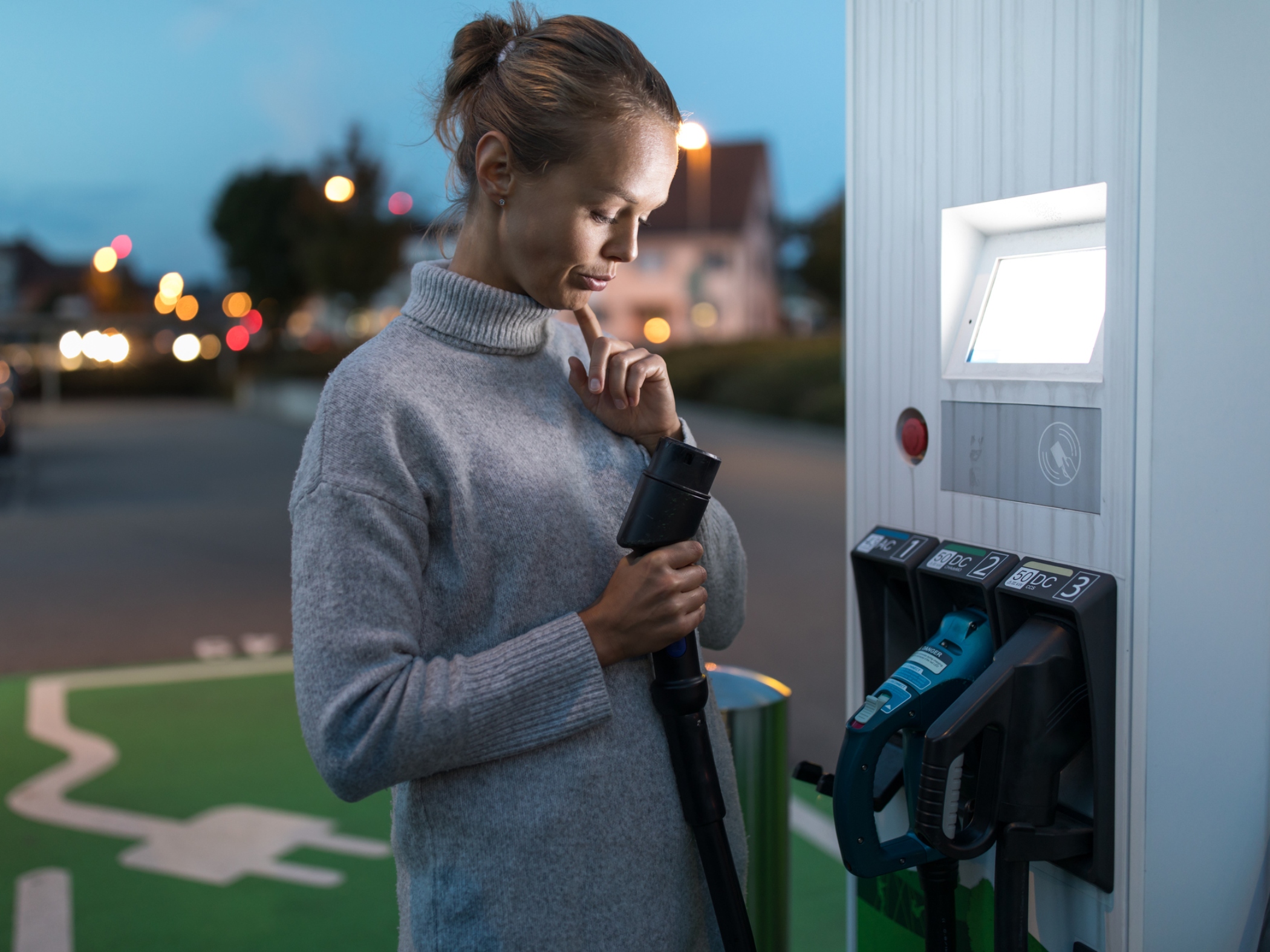Electric Vehicle Charging: Everything You Need to Know

Many drivers may be hesitant to switch to electric vehicles (EVs) simply because of uncertainty about how to recharge the battery. After all, gas stations seem to be pretty much everywhere and EV chargers can be harder to scope out.
But as it turns out, EV charging stations are abundant in the U.S., and EV charging can be explained easily. Here's what you need to know about refilling an EV battery and how it all works.
Kilowatts vs. kilowatt-hours
The first step to understanding EV charging is knowing the difference between kilowatts (kW) and kilowatt-hours (kWh).
-
Kilowatts (kW) measure how much power is being used at a given moment and are also known as demand. You may see a charging station's output expressed in kW.
-
Kilowatt-hours (kWh) measure the amount of energy used over a given amount of time (energy consumption). The amount of electricity you’ve received during an EV charging session is expressed in kWh.
Charging levels explained
EV chargers are characterized by levels, instead of grades. These levels determine how quickly a charger will take to recharge an EV's battery — 1 taking the longest, while DC fast charging is fastest.
-
Level 1 (L1) chargers supply an average of 1.3-2.4 kW of power. That translates to about 3-5 miles of range per hour, meaning it can take 15-24 hours to fully charge an EV.
-
Level 2 (L2) chargers typically output between 3 and 19 kW of power. L2 chargers can add 18-28 miles of range each hour, fully recharging an EV in four to eight hours.
-
Direct-Current Fast Chargers (DCFC), formerly called Level 3 chargers, typically output a maximum of 350 kW. They can fill an EV battery to 80% capacity in 20-40 minutes and fully recharge it in 60-90 minutes.
Both L1 and L2 chargers deliver alternating current (AC), while DC fast charging delivers direct current (DC). L1 chargers use standard 120-volt plugs, L2 chargers use 240-volt plugs and DCFC use 480-volt plugs.
Public vs. private charging
Now it's time to get into where you can charge. Charging stations can have multiple charging devices, which can have multiple charging points. That means a charging station's capacity is determined by the number of available charging points. But what are the differences between public and private charging stations?
Public charging is the EV version of fueling at gas stations. Public charging stations are often located off main roads, close to shopping centers and restaurants. They typically use Level 2 or 3 charging and have more charging points than private stations. These stations may be free, while others may charge a fee. Billing rates are determined by the charging networks or site hosts and can range from $0.10/kWh to over $1.00/kWh.
Private charging stations are not available for everyone's use. Many private stations are located in residential or office buildings and can only be used by residents and employees. Level 1 and 2 chargers are most common in these spaces. Electricity from residential L1 chargers can cost an average $0.13 per kWh, while office buildings may charge more for L2 charging.
According to ENERGY STAR®, driving an EV and installing a Level 2 EV charging station at home provides savings, convenience and smart technology. Shop for qualifying chargers now and save $250 with a SWEPCO incentive!
Optimizing your charging schedule
Planning ahead is important to ensure you have time to reach a full charge. If you don't have access to a charging station at home or work, you'll need to determine where the most convenient charging spot is. The U.S. Department of Energy's Electric Vehicle Charging Station Locations, PlugShare's EV Charging Station Map and other resources allow you to search by zip code, charging level and more. This makes it easy to find the right charging station that meets your needs.
Now that you know how EV charging works, you can feel comfortable and secure taking your EV on daily drives or eco-friendly adventures.